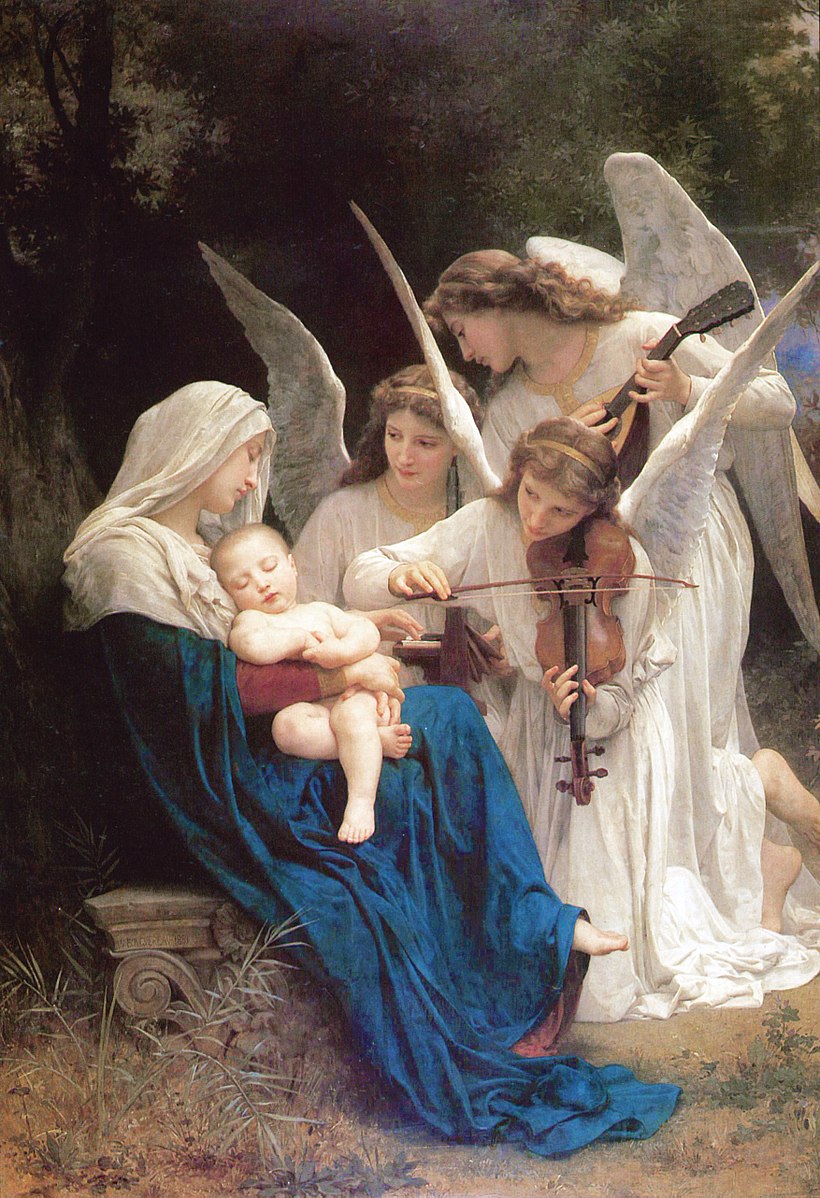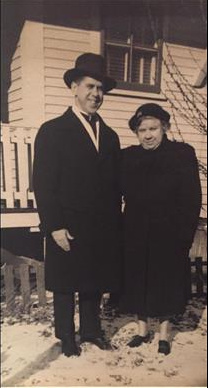 |
| Priest and servers, in a Good Friday procession in Popayán |
[J. Richard Haefer completes his guest columns about a Holy Week visit to Colombia and to the Festival of Religious Music at Popayán:]
As I was not writing during the Triduum and, after Easter, we took a trip into the heart of the Andes, to the Santuario de Nuestra Señora del Rosario de Las Lajas, by narrow roads with deep ravines on one or both sides, this last report will reach you in the Easter season.
The concerts of Holy Thursday and Friday noon were strictly secular: strange, since they are the most sacred days of the week. Thursday noon saw a presentation of music for flute and piano by the Barcelona flautist Patricia de No accompanied by Cristina Casale from England (the online information is incorrect), including works by C. P. E. Bach (1714-1788), François Poulenc (1899-1963), the Hungarian Franz Doppler (1821-1883) and twentieth-century composers Gary Shocker (U.S.A., b. 1959), Astor Piazolla (Argentina, 1821-1992) and Francois Borne (Spain, 1840-1920).
The evening concert featured one of five professional orchestras of Colombia: Orquesta Sinfónica de EAFIT (consisting of faculty and students from EAFIT university in Medellin and organized in 2000) and conducted by Cecilia Espinosa of Wednesday’s Coro de Cámara “Arcadia”. The opening overture by Emil von Rezncek (1860-1945) was quite delightful and the highlight of the program. Astor Piazzolla’s “Estacione Porteñas” is certainly a candidate for a concert of “disaster pieces of music.” Several sections ended with quotes from Vivaldi’s Four Seasons and one section featured the cellos playing the ostinato from Pachelbel’s Canon in D. The violin soloist, Oksana Solovieva, born in Russia but raised in the West, did a splendid performance of the solo parts despite the mundane nature of the composition. With so many excellent contemporary Latin American composers it is too bad this trite piece was chosen. Sibelius’ Symphony number 2 (Op. 43) concluded the concert.
At noon on Holy Friday the ensemble Macondo Chamber Players (string quintet, piano and oboe) presented works by Mozart, Borodin, Rachmaninoff, and Brahms. While interesting, none would qualify for use in any religious situation.
On Friday evening the Orquesta Sinfónica de EAFIT, along with the Coros de Cámara de Popayán, Arcadia, and Los Gatos presented Brahms’ German Requiem, Op. 45. A wonderful balance between choruses and the low strings opened the composition but soon the full orchestra overpowered the singers, as happens with many orchestra conductors. As with the previous evening and the concert by Arcadia, the overall sound was flat and unchanging throughout this wonderful composition. The highlight was the solo by baritone Valeriano Lanchas and the soprano solo by local singer Julie Fernández was also well done.
As for the festival as a whole, it was certainly successful. The audience for nearly every concert was full, with admission free except for the last two evenings. With the exception of the latter, the audience was a mix of townsfolk and tourists with many locals attending all the free programs. It was interesting to see the appreciation for music in general as nary a program was left behind, unlike at concerts in the U.S., where programs are scattered on the floor of the concert hall. As the director of the festival (Dra. Stella Dupont) refused my request for an interview, I have no idea how the groups were chosen or any details of the arrangements. While the organizers tried to obtain advance information about the concerts and performers, it is likely that some were booked at the last minute, and the program booklet was filled with editorial errors. I assume that no restrictions were imposed as regards repertoire, though I would have preferred to have at least some religious music on every concert.
I will complete this report by mentioning a little about the state of church music in Colombia and about the second reason I chose to be in Popayán during Holy Week.
To date I have witnessed church music in Colombia only in Bogotá and Popayán, and I am sorry to report that it is as dismal as in most Spanish-speaking parishes in the United States: multiple guitar players and some percussion, with happy-clappy songs, clapping often encouraged by the priests (and, of course, altar girls). Brethren, we have a long way to come to return the dignity of the Mass to its proper state.
 |
Our Lady of Sorrows, in the
Good Friday night procession |
As to Holy Week in Popayán: as in many cities in Spain (especially in Castile, León, Murcia, and Andalusia), in Colombia in the cities of Pamplona, Monpox, and especially Popayán, nightly processions are held throughout Holy Week. Carried in the processions are life-size statues and groups of statues arranged in biblical Passion scenes, each paso carried by eight Cargueros, all men. The processions last up to four hours and demand much endurance, especially since some of the streets are hilly. In Popayán family groups support each paso, while in Spain the pasos are organized by brotherhoods, and one or two dozen men carry the larger Spanish pasos.
Each day is devoted to a particular topic: Friday of Passion Week, “Friday of Sorrows;” Palm Sunday, the Passion; Tuesday of Holy Week, Our Lady of Sorrows; Wednesday, the Love of Jesus; Thursday, “Our Lord of the True Cross”; Friday, the “Funeral of Christ”; and Saturday, “Jesus Christ Resurrected.” Appropriate statues and scenes illustrate each procession, numbering from seven to seventeen pasos.
Also included in each procession are bands and choruses, as well as the Archbishop of Popayán, priests from each of the churches from which the different processions start, and various dignitaries (including local members of the Equestrian Order of the Holy Sepulchre of Jerusalem). Dies Irae on Friday, and two choruses even sang traditional Latin hymns. The bands marched at a pace of about 30 beats per minute and the Cargueras stopped about every half-block to rest the pasos, weighing over 400 pounds each. In a future paper I will be discussing the religious-commercial-patrimonial “conflict” of the modern Popayán Holy Week processions, with input from interviews with various people involved with the events.
In the earlier processions, the bands played secular music — the large drum sections could be heard five to ten blocks away — while during the Triduum Spanish religious songs were played, as well as the
If you have enjoyed these reports or would like more information, please feel free to contact me.
[Thanks to Dr. Haefer (rhaefer at asu.edu) for the guest contributions. — Ed.]








